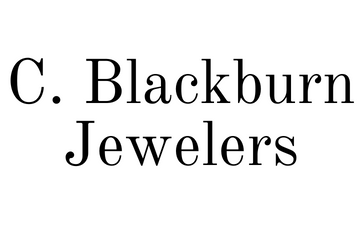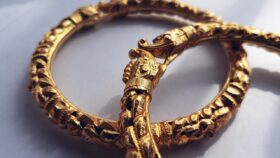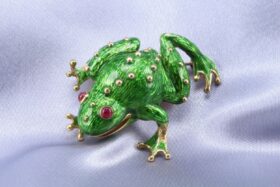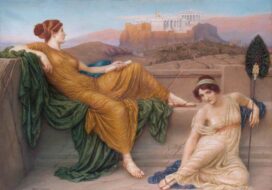
06 Apr Etruscan Jewelry: Its Symbols & Myths
Previously we wrote about ancient Egyptian jewelry, and its spiritual and cultural significance. In today’s post we will discuss another ancient civilization where jewelry played an important role: the Etruscans of central Italy. The Etruscans were an Italian civilization that flourished in between the 8th and 3rd centuries BC. They were known for their impressive artistry and craftsmanship, particularly in jewelry-making. Etruscan jewelry was not only a symbol of wealth and status but also had spiritual and cultural significance.
One of the most distinctive features of Etruscan jewelry was granulation, a technique where small gold balls were fused onto a gold surface to create intricate patterns and designs. Filigree, another technique involving twisted or braided metal threads, was also commonly used. Etruscan jewelry often featured animal motifs such as lions, eagles, and bulls, as well as stylized human figures and floral patterns.
Etruscan jewelry had spiritual significance and was often buried with the deceased as a form of protection and a symbol of the afterlife. Jewelry was also worn as amulets to ward off evil spirits and bring good luck. The Etruscans believed that jewelry had magical properties that could enhance a person’s health, wealth, and prosperity.
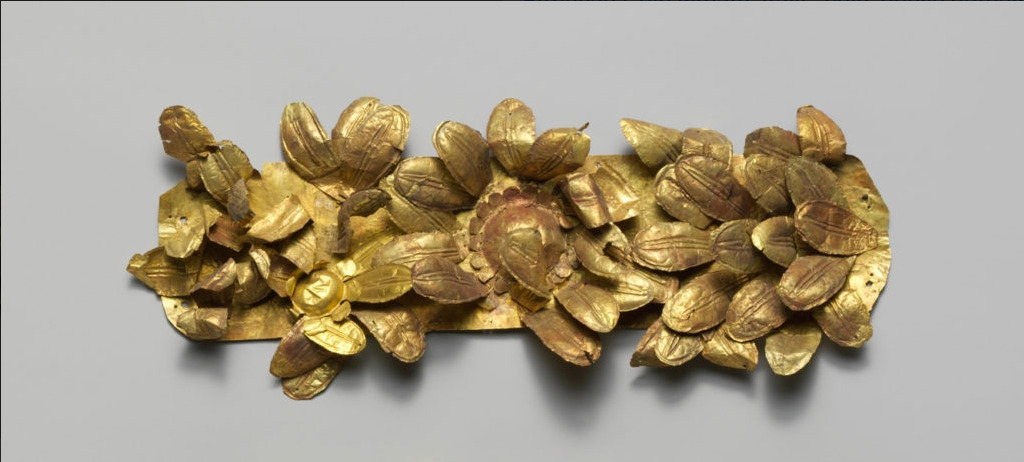
Etruscan Jewelry Making Materials
The Etruscans believed that the materials used in their jewelry had magical properties. The most commonly used materials in Etruscan jewelry were gold, silver, and bronze. Each metal was believed to have its own spiritual properties and symbolic meaning.
Gold was considered the most precious and sacred metal by the Etruscans. It was associated with the sun, which was the most powerful and revered deity in the Etruscan pantheon. Gold was believed to have purifying and healing properties, and it was often used in jewelry to symbolize the sun’s life-giving energy.
Silver was also highly valued by the Etruscans and was associated with the moon and the goddess Selene. Silver was believed to have protective and healing properties, and it was often used in amulets and talismans to ward off evil spirits and bring good luck.
Bronze was a more common material used in Etruscan jewelry and was associated with the god Vulcan, who was the patron of metalworking. Bronze was believed to have grounding and stabilizing properties, and it was often used in jewelry to symbolize strength and stability.
The Etruscans also used a variety of gemstones in their jewelry for their perceived spiritual properties. Here are some examples:
Carnelian: Carnelian was believed to have protective properties and was often used in amulets and talismans. It was also associated with vitality, courage, and creativity.
Lapis Lazuli: Lapis Lazuli was considered a sacred stone by the Etruscans and was associated with the gods. It was believed to enhance spiritual awareness and insight and was often used in religious ceremonies.
Amber: Amber was associated with the sun and was believed to have healing properties. It was often used in amulets and charms to protect against disease and promote good health.
Turquoise: Turquoise was believed to have protective properties and was often used in amulets and talismans. It was also associated with fertility, prosperity, and abundance.
Overall, the Etruscans believed that the materials used in their jewelry had spiritual properties that could enhance the wearer’s physical, emotional, and spiritual well-being. They placed great importance on the symbolism and meaning of their jewelry, which was often passed down through generations as family heirlooms.
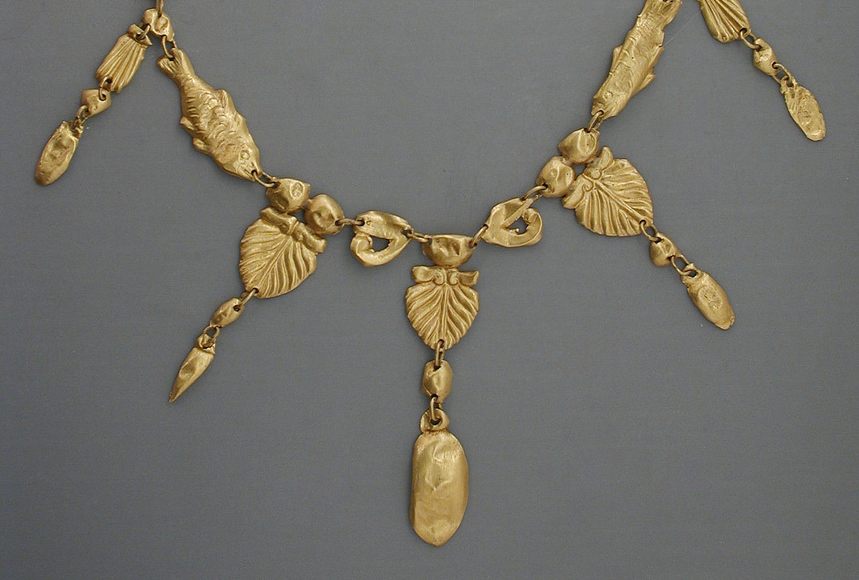
Etruscan Jewelry Symbols & Mythology
The Etruscans used a variety of symbols and motifs in their jewelry for protective and auspicious purposes. A few of the most common were:
The Gorgon: A symbol of protection, the Gorgon was a mythical creature with snakes for hair that could turn people to stone. The image of the Gorgon was often used on Etruscan jewelry to ward off evil spirits and protect the wearer.
The Scarab Beetle: This beetle was associated with rebirth and regeneration and was a popular motif in Etruscan jewelry. It was believed to bring good luck and was often used in amulets and charms.
The Eye: The eye was a powerful symbol in many ancient cultures and was believed to have protective properties. In Etruscan jewelry, the eye was often depicted as a stylized design or as an actual eye made from a precious stone.
The Swastika: Before it became a symbol of evil during World War II, the swastika was a common symbol of prosperity in many ancient cultures, including the Etruscans who often used it in their jewelry.
The Tree of Life: The tree of life was a symbol of fertility, growth, and abundance. It was often used in Etruscan jewelry as a symbol of prosperity and good fortune.

We Buy Etruscan Revival Jewelry
As antique jewelry buyers at C. Blackburn Jewelers is always interested in hearing from sellers of Etruscan revival jewelry, including rings, necklaces, and earrings. The Etruscan Revival period of jewelry making occurred during the 19th century and was inspired by the ancient Etruscan civilization. It was a time of great interest in the classical world, and jewelry designers began to look to the past for inspiration.
The Etruscan Revival style of jewelry was characterized by intricate designs, granulation, and the use of bold, colorful gemstones. The designs often featured motifs from the ancient Etruscan world, such as birds, lions, and the Gorgon’s head. The jewelry was typically made from gold or gold-plated silver and was highly sought after by wealthy collectors.
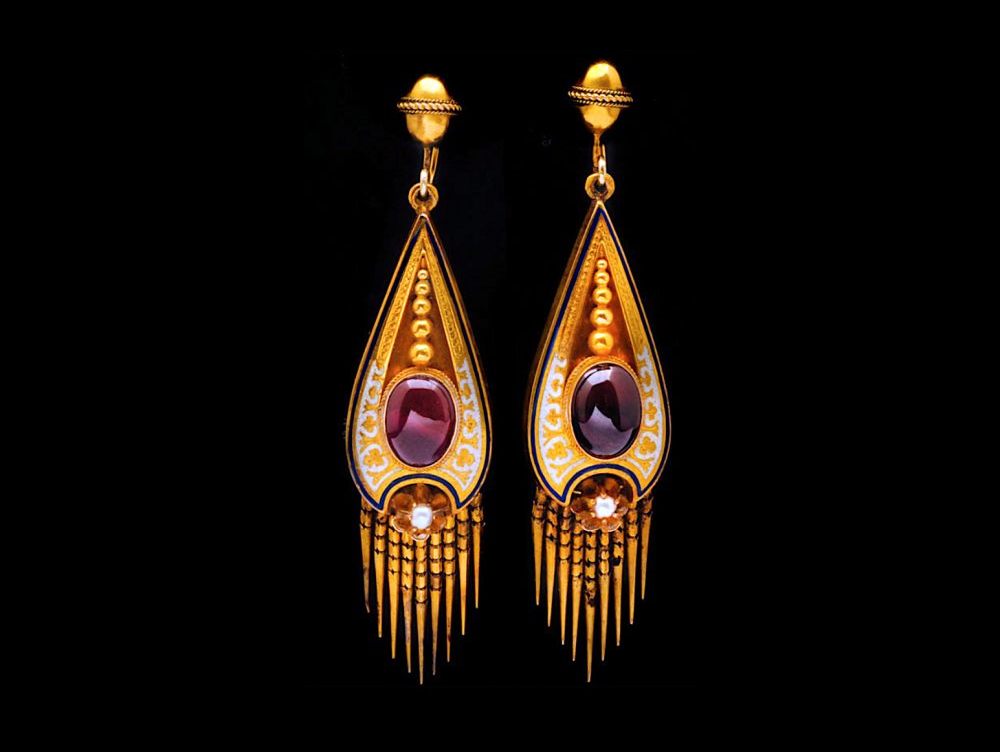
Some of the most famous designers of Etruscan Revival jewelry include Castellani, Giuliano, and Carlo Giuliano. The Castellani family was known for their intricate designs and their use of ancient techniques such as granulation and filigree. The Giuliano brothers were also highly skilled jewelers who produced stunning pieces inspired by the Etruscan and Roman worlds.
Other notable designers of Etruscan Revival jewelry include Fortunato Pio Castellani, who was known for his elaborate designs featuring mythological creatures, and Robert Phillips, who was known for his use of bold gemstones and intricate wirework.
The Etruscan Revival period of jewelry making was a time of great creativity and innovation in the jewelry world. To sell antique jewelry from this period, please send us a message describing your item, or call C. Blackburn Jewelers at 858-251-3006.
